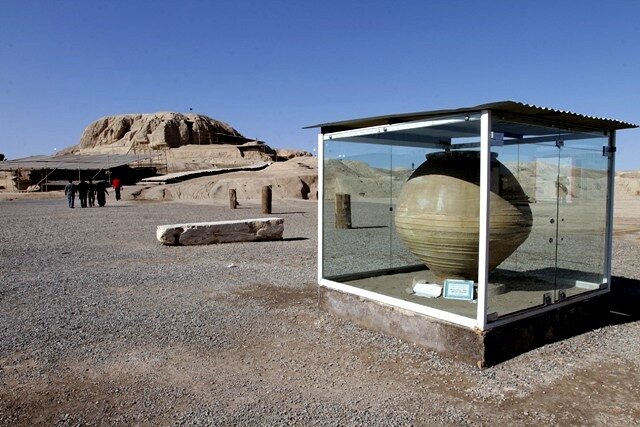Archaeologists in search of 6,000-year-old ruins in Sialk hills

TEHRAN–An archaeological team has commenced work in a bid to unearth 6,000-year-old ruins and relics in Sialk hills, which was once the site of a fortified town near modern Kashan in central Iran.
“The archaeologists are currently looking for six-thousand-year-old layers in the Sialk hills, and of course, they plan to involve ordinary people in excavations,” ILNA quoted Sialk’s director Javad Hosseinzadeh-Sadati as saying on Sunday.
“Over the past few days, we have managed to determine the entirety of the excavation site, and after passing through this layer, which does not provide us with any specific information, we will reach the bottom layer, which is expected to provide more accurate information to archaeologists, because its soil is stronger and more intact.”
Last week, the team uncovered the ruins of a home, which according to preliminary estimates dates at least 5,000 years, according to Jebrael Nokandeh who presides over the National Museum of Iran.
“The archaeologists have also found engraved potteries in this layer… However, excavations will be continued to deeper layers after the current level is documented with three-dimensional imaging technology, Hosseinzadeh-Sadati explained.
In addition, Nokandeh lamented that Sialk is not as well known among Iranian people as it should be.
“Sialk is a well-known site in the archaeology profession and major museums, but as much as it is famous in the world, it is unknown to its motherland,” Nokandeh said.
“Sialk needs more introduction. I don't know how many tourists come to Kashan in a year, but less than 10% of Kashan tourists come to see the archaeological site because it is not known.”
Earlier this month, a team of cultural heritage experts and archaeologists was tasked with conducting extensive field research to verify the legal boundary of the site.
Situated halfway between Kashan and Fin in Isfahan province, Tapeh Sialk (“Sialk Hills”) has yielded interesting pottery pieces, metal tools, and domestic implements made from stone, clay, and bone that date from as early as the 4th millennium BC.
“Sialk is one of the most important hubs of civilization in Kashan and Iran. Due to this importance, determining the area and boundaries of this ancient site is the expertise of archaeologists and the final opinion must be announced by those experts,” Isfahan’s tourism chief Ahmad Danainia said earlier this month. Danainia reminded efforts underway to register the site in the UNESCO World Heritage list, saying “For the global registration of these ancient hills, its limits should be modified…”
Sialk is said to be a treasure trove of information about diverse subjects such as palaeobotany, palaeozoology, palaeoanatomy, diet, climate change and ancient metallurgy.
In 2019, the Louvre museum hosted an international conference on Tapeh Sialk (“Sialk hills”), which was attended by archaeologists from Germany, England, France and Iran. According to Louvre, the event was aimed to cast a new light on the ancient site some 80 years after its first excavation to lay an opportunity to present to the public the diversity of research and projects, as well as current issues of preservation and enhancement of the site.
According to the Louvre, the oldest levels document the occupation of the Iranian plateau from the Neolithic to the Chololithic over more than two millennia. Then, around 3000 BC, the site is integrated into the vast cultural area called Proto-Elamite, during which specific writing appears.
Much later, in the Iron Age, the local culture, represented by beautifully painted pottery, is best known through the excavation of necropolises. This culture, which appeared new in the region, has long been identified with the Medes and fueled the debate over the arrival of new populations speaking Iranian languages from which comes modern Persian.
Several excavation projects at the site have so far been conducted, beginning with a 1933 French Louvre delegation led by Roman Ghirshman; capping with a most recent project in 2009, which was led by Hassan Fazeli-Nashli, a faculty member of the Archaeology Department, University of Tehran.
When it comes to tourism, travellers regularly opt to pass Kashan on their journeys between Tehran, Isfahan, Shiraz, and Yazd because this delightful oasis city on the edge of the Dasht-e Kavir is one of Iran’s most alluring destinations. Kashan not only boasts a cluster of architectural wonders, an atmospheric-covered bazaar, and a UNESCO-recognized garden, but it also offers some of central Iran’s best traditional hotels.
AM
Leave a Comment